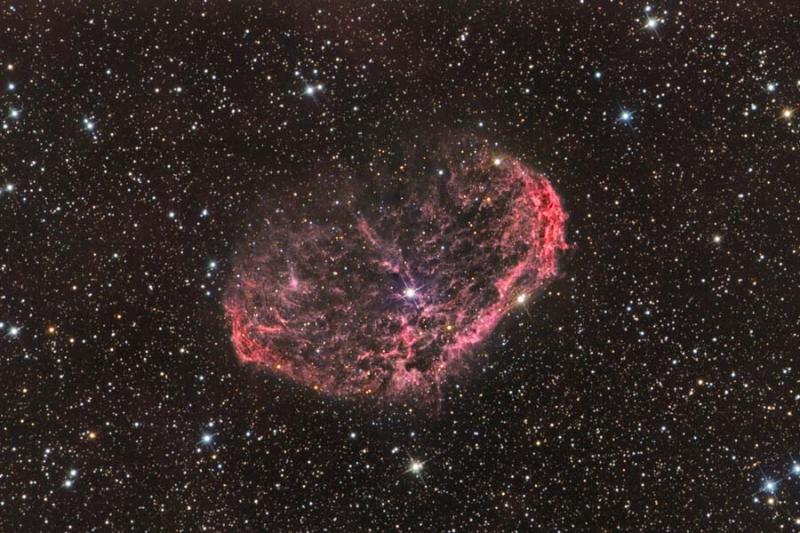 |
Астронет: Астрономическая картинка дня NGC 6888: туманность Полумесяц http://variable-stars.ru/db/msg/1224431/eng |
Credit & Copyright: Franck Bugnet
Explanation:
What caused the Crescent Nebula?
Looking like an emerging space
cocoon, the Crescent Nebula,
visible in the center of the
above image,
was created by the brightest star in its center.
A leading progenitor hypothesis has the
Crescent Nebula
beginning to form about 250,000 years ago.
At that time, the massive central star had evolved to become a
Wolf-Rayet star (WR 136),
shedding its outer envelope in a strong
stellar wind, ejecting the equivalent of our
Sun's mass every 10,000 years.
This wind impacted surrounding gas left over from a
previous phase, compacting it into a series of
complex shells, and lighting it up.
The Crescent Nebula, also known as NGC 6888, lies about 4,700
light-years away in the constellation of
Cygnus.
Star WR 136
will probably undergo a
supernova
explosion sometime in the next million years.
Authors & editors:
Robert Nemiroff
(MTU) &
Jerry Bonnell
(USRA)
NASA Web Site Statements, Warnings,
and Disclaimers
NASA Official: Jay Norris.
Specific
rights apply.
A service of:
LHEA at
NASA /
GSFC
& Michigan Tech. U.
